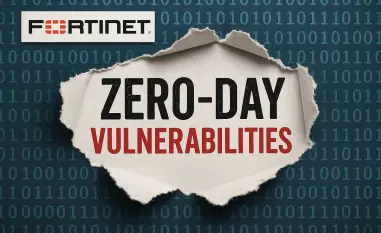Setting the Stage for a Connected Yet Vulnerable World
Imagine a bustling city where hospitals, power grids, and traffic systems grind to a halt because of a single malicious signal sent from a cheap, handheld device, highlighting the fragility of our interconnected world. This scenario is not science fiction but a stark reality in an era where wireless communication underpins nearly every facet of modern life. From Wi-Fi networks in homes to satellite systems guiding global navigation, the reliance on electromagnetic wave transmission has never been greater. Yet, with this connectivity comes an alarming vulnerability to interference, jamming, and sophisticated cyberattacks that threaten public safety and national security. This review delves into the intricate landscape of wireless communication security, exploring its critical components, emerging threats, and innovative defenses shaping the technology’s future.
Core Features and Performance of Wireless Systems
The Backbone of Electromagnetic Transmission
At the heart of wireless communication lies the transmission of data via electromagnetic waves, a process that enables everything from cellular calls to GPS navigation. This technology’s performance hinges on the seamless exchange of signals across vast distances, often without physical barriers. However, the open nature of these transmissions makes them susceptible to disruptions like signal interference and spoofing, where fake signals mimic legitimate ones. Such vulnerabilities can have dire consequences, as seen in potential disruptions to emergency services or navigation systems, highlighting a fundamental flaw in the design that demands robust security enhancements.
Bandwidth Strain and Device Overcrowding
Another defining feature of wireless systems is their dependence on limited bandwidth, a resource stretched thin by the exponential growth of connected devices. As billions of gadgets—from smartphones to IoT sensors—vie for spectrum space, the risk of accidental interference rises, alongside opportunities for deliberate attacks. This overcrowding not only degrades performance, slowing down data transfer rates, but also creates entry points for malicious actors to exploit. Addressing this strain requires innovative spectrum management solutions to ensure both efficiency and security in an increasingly crowded digital ecosystem.
Scalability Across Diverse Applications
Wireless communication excels in its adaptability, supporting critical infrastructure like hospitals, electrical substations, and transportation networks. Its ability to scale across personal, industrial, and governmental sectors demonstrates remarkable versatility. Yet, this broad application also amplifies the stakes of security failures, as a breach in one system could cascade into widespread societal impacts. The technology’s performance in real-world settings, while impressive, underscores the urgent need for tailored defenses to protect these vital systems from evolving cyber threats.
Emerging Threats and Security Challenges
Sophisticated Cyberattacks on the Horizon
The threat landscape for wireless communication is evolving at an alarming pace, with attackers employing advanced techniques such as deep-fake signals to deceive systems. These sophisticated methods can disrupt aviation, power supplies, and even personal security, as inexpensive devices become tools for jamming or spoofing. The ease of access to such disruptive technologies poses a significant challenge, necessitating continuous advancements in detection and prevention strategies to stay ahead of malicious intent.
Expanding Frontiers: Space Cybersecurity
Beyond terrestrial concerns, the scope of wireless security now extends into space, where satellite systems face unique cyber risks. As space exploration and communication infrastructure grow, cyberattacks emerge as a cost-effective and stealthy means of disruption. Protecting these assets demands new policies and technologies, an area of focus for researchers aiming to safeguard global connectivity from threats originating beyond Earth’s atmosphere.
Societal Impacts of Digital Platforms
Wireless communication also amplifies societal challenges through digital platforms that magnify human behavior, both constructive and destructive. Online misinformation, political aggression, and rumor-spreading, facilitated by wireless networks, erode democratic processes and national stability. This intersection of technology and psychology reveals a less tangible but equally critical security concern, urging a multidisciplinary approach to mitigate the broader implications of unchecked digital influence.
Innovative Defenses and Research Efforts
Real-World Simulations for Robust Protection
Cutting-edge research, such as the Smart City testbeds developed by academic institutions, offers promising avenues for securing wireless systems. These simulations replicate cyberattacks on critical infrastructure, enabling experts to predict hostile actions and design self-defense mechanisms. By testing scenarios involving hospitals or traffic networks, such initiatives provide actionable insights into fortifying systems against real-world threats, marking a proactive shift in security strategy.
Spectrum Security and Predictive Models
Efforts to enhance spectrum security focus on managing electromagnetic wave transmission to minimize interference and unauthorized access. Researchers are developing predictive models to anticipate disruptions, ensuring that bandwidth allocation remains efficient and secure. This technical innovation is vital for maintaining the performance of wireless networks under pressure, offering a blueprint for resilience in the face of growing device proliferation and malicious interference.
Interdisciplinary Solutions for Societal Threats
Addressing the societal dimensions of wireless security requires blending technology with fields like psychology and criminology. Research into online behavior seeks to understand and counteract the spread of harmful content amplified by wireless connectivity. By integrating these insights with technological defenses, there is potential to create holistic strategies that protect not only infrastructure but also the democratic fabric threatened by digital misinformation.
Reflecting on the Path Forward
Looking back, this exploration of wireless communication security revealed a technology both indispensable and inherently vulnerable, tested by an array of sophisticated threats from terrestrial jamming to space-based attacks. The performance of these systems, while transformative across countless applications, was repeatedly challenged by bandwidth constraints and societal misuse. Research efforts, including real-world simulations and interdisciplinary approaches, demonstrated significant progress in countering these risks. Moving forward, the focus must shift toward implementing scalable encryption and spectrum management solutions, alongside fostering international collaboration to establish unified cybersecurity policies. A concerted effort to integrate psychological insights into technological defenses could further address online societal threats, ensuring that wireless communication continues to connect the world safely and securely in the years ahead.













